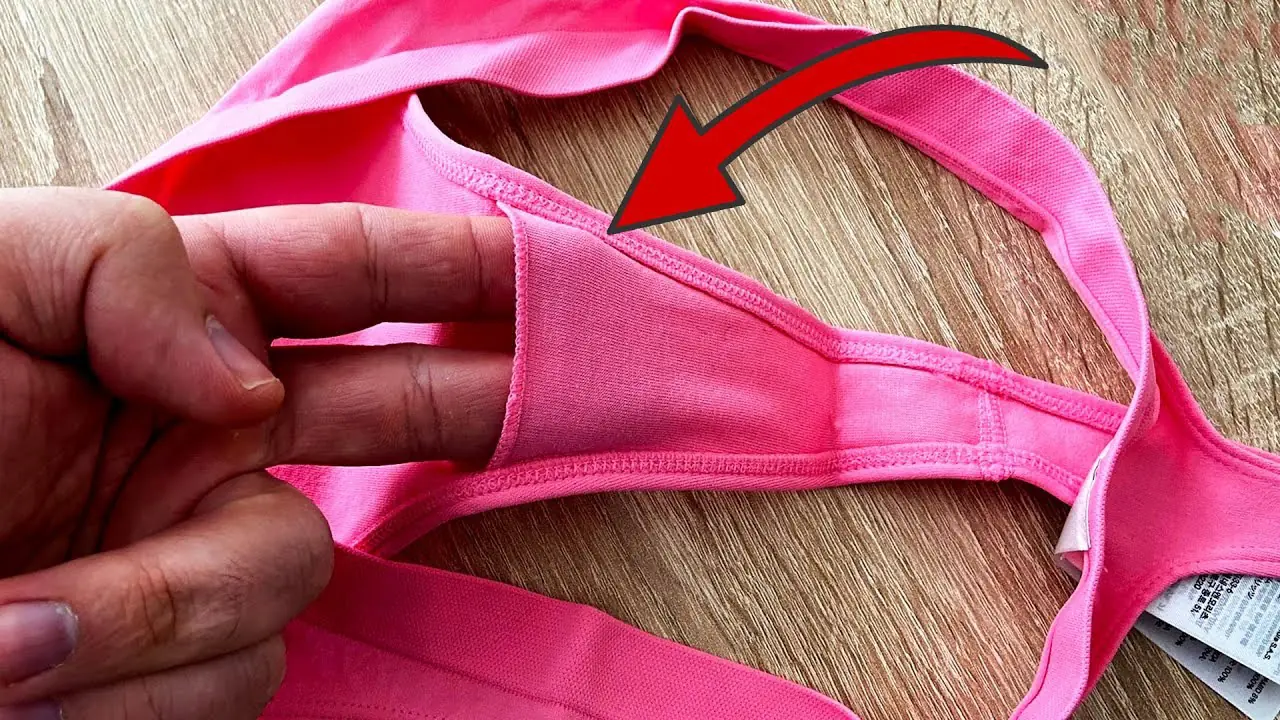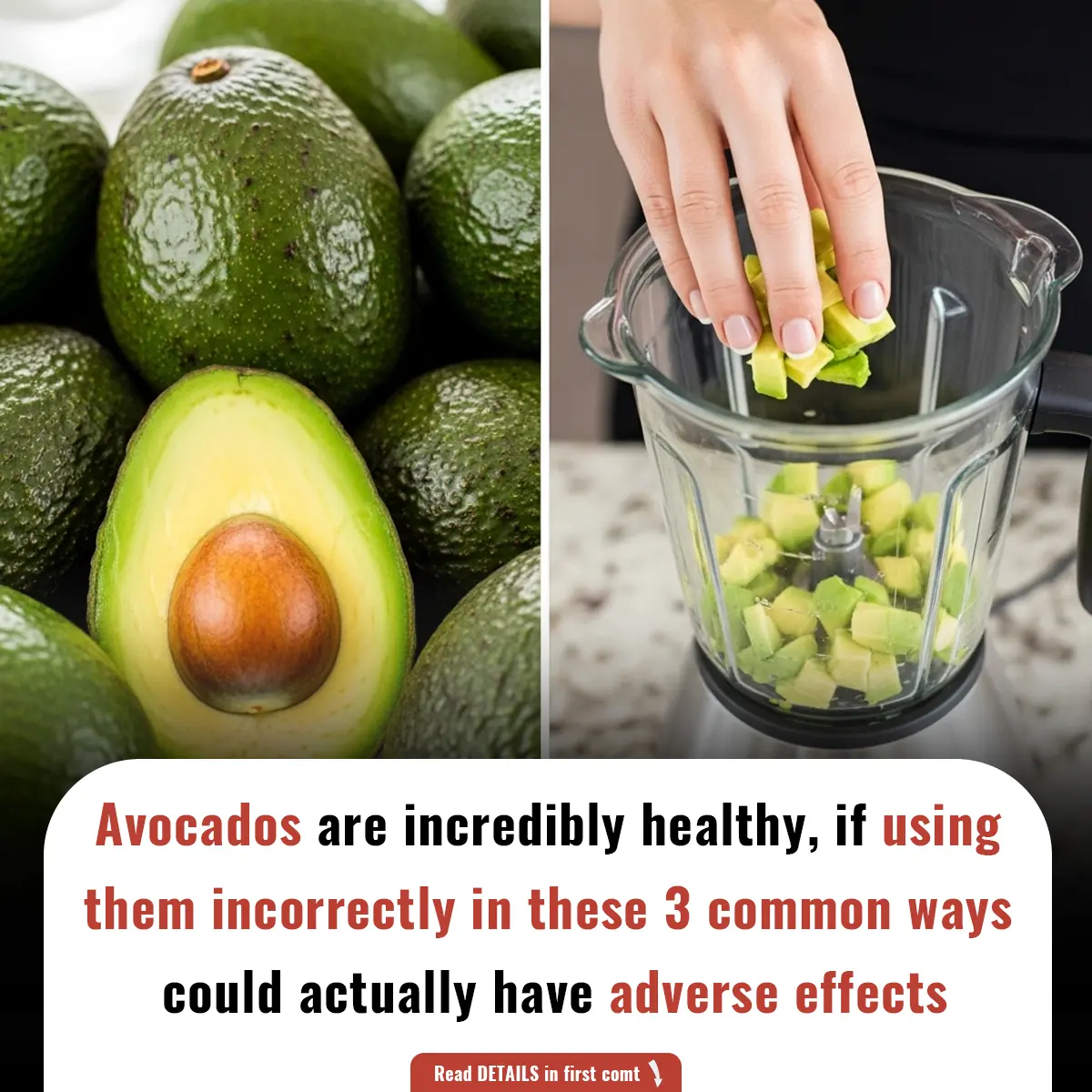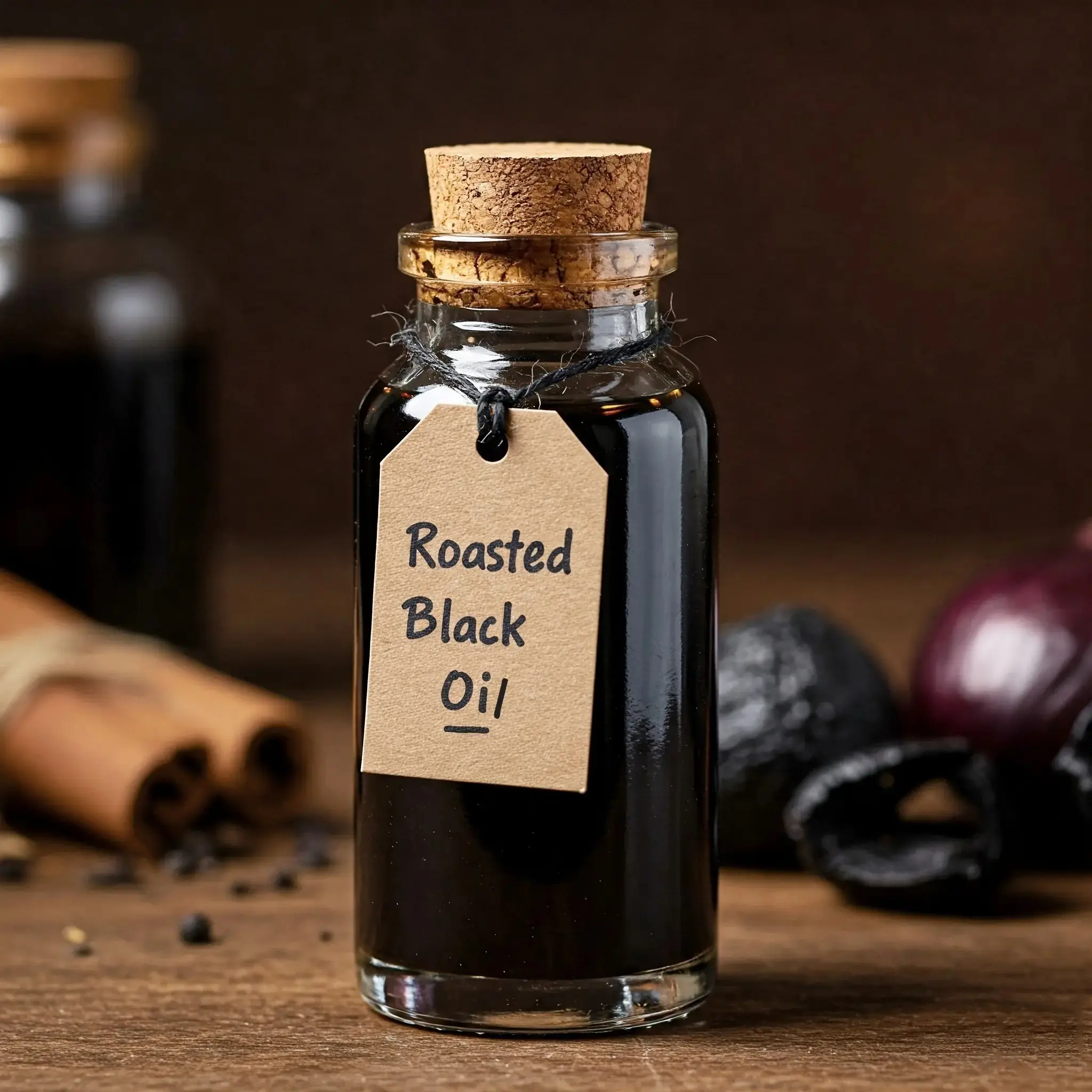
6 Common Foods You Should Never Store in the Fridge – #4 Is a Huge Mistake
You might be ruining your food by storing it incorrectly! Check out these 6 foods that should never be kept in the fridge, and why storing #4 there is a huge mistake.
Many of us have a tendency to store food in the fridge to keep it fresh for longer. However, some foods, when placed in the fridge, can lose their texture, flavor, and even their nutritional value. It’s a common mistake that many of us unknowingly make, thinking the fridge is the best place to preserve everything.
1. Potatoes: The Cold Storage Blunder
Potatoes are often stored in the fridge, but doing so can cause the starch in them to turn into sugar, making them taste sweeter and altering their texture. Storing potatoes in cold temperatures can also cause them to become gritty and unappetizing. The ideal place to store potatoes is in a cool, dark, and well-ventilated area, such as a pantry or cupboard. Make sure to keep them away from onions, as the gases they emit can cause potatoes to spoil faster.
“Potatoes are better off being kept at room temperature, away from direct sunlight. Refrigeration can change their taste and texture,” says food expert Laura Simmons.
2. Tomatoes: Cold Causes Flavor Loss
Tomatoes are another food that should not be refrigerated. Cold temperatures can cause the cell walls of tomatoes to break down, resulting in a mushy texture and a loss of flavor. Tomatoes are best stored at room temperature, away from sunlight. If you have very ripe tomatoes, you can store them in the fridge for a short period, but it’s best to let them return to room temperature before eating them to regain their full flavor.
“The natural enzymes in tomatoes work best at room temperature, which helps them ripen properly and maintain their taste,” Simmons adds.
3. Garlic: Keep It Dry and Cool
Garlic, a staple in most kitchens, should never be stored in the fridge. The moisture inside the fridge can cause garlic to sprout or mold. Garlic thrives best when stored in a cool, dry, and dark place, like a pantry or a garlic keeper. Keeping garlic in the fridge can also lead to a loss of its strong flavor.
“Garlic needs proper airflow, so it’s best kept in an open container or mesh bag in a cool, dry area,” explains culinary expert Mark Johnson.
4. Bananas: The Cold Temperature Error
One of the most common mistakes is storing bananas in the fridge. Bananas are sensitive to cold and, when stored in the fridge, their peel turns brown and soft. While refrigeration doesn’t affect the fruit’s inner flesh, the texture and appearance can be altered. Bananas should be stored at room temperature, hanging from a banana hook or on a fruit bowl. If they ripen too quickly, you can freeze them for smoothies or baking.
“Bananas are tropical fruits that thrive in warmer temperatures. The fridge causes them to ripen too fast and spoil their appearance,” says nutritionist Anne Hughes.
5. Bread: Stale and Hard in the Fridge
Many people store bread in the fridge to keep it from getting moldy, but this can actually cause it to become stale faster. Refrigeration dries out the bread, causing it to lose its freshness and become hard. The best way to keep bread fresh is to store it at room temperature for up to two days, and freeze it for longer storage. Simply take out slices as needed and toast them when ready to eat.
“Storing bread in the fridge is a mistake. Instead, use a bread box or airtight container for short-term storage,” advises food preservation specialist Claire Dutton.
6. Avocados: Cold Dulls the Taste
Avocados are sensitive to cold temperatures, and storing them in the fridge can cause them to lose their creamy texture and flavor. When they’re not fully ripe, you can leave them on the counter until they ripen, and then place them in the fridge if you want to preserve their ripeness. If the avocado is already ripe, you can refrigerate it to extend its shelf life for a few more days, but it’s best eaten soon after being refrigerated.
“Avocados ripen best at room temperature. Once they’re ripe, refrigerating them can help, but it’s best to eat them soon after,” says nutrition expert Sarah Williams.
Conclusion: Storing Foods Correctly for Freshness
Knowing the proper way to store your food can significantly improve its taste, texture, and longevity. By avoiding these common mistakes, you can prevent food spoilage, preserve the flavor of your favorite foods, and avoid wasting money on produce that goes bad too quickly. Be sure to store your potatoes, tomatoes, garlic, bananas, bread, and avocados in the correct places to ensure they stay fresh for as long as possible.
Remember, a little knowledge goes a long way when it comes to keeping your food fresh and flavorful. Keep these tips in mind and enjoy better meals with less waste!
News in the same category


36-Year-Old Teacher Passed Away From Diabetes Doctors Say Was Triggered By Everyday Foods
Diabetes is a dangerous condition with numerous complications, and diet is a key factor.

Experts issue urgent warning about terrifying hidden symptom from taking Mounjaro and Ozempic
Experts have issued an urgent warning about a symptom that can come to light from taking drugs such as Mounjaro and Ozempic.

The Benefits of Epsom Salt Foot Soak: A Natural Remedy for Foot Pain and Health
Discover the health benefits of Epsom salt foot soaks, including pain relief, exfoliation, fungal infection treatment, and more. Learn how to safely use Epsom salt for foot health.

What Causes Blue Veins? Understanding the Reasons and When to Seek Help
Blue or green veins are common, but when should you worry? Learn the possible causes of visible veins, from genetics to lifestyle factors, and when it may indicate a medical condition.

7 Early Warning Signs of Diabetes You Shouldn’t Ignore: Act Now for Better Health
Learn about 7 early warning signs of diabetes that could be easily overlooked. Early detection can help manage diabetes, prevent complications, and improve quality of life. Read on for expert insights.

Genetic Link Between Endometriosis and Autoimmune Diseases Revealed in New Study
A new study has identified a shared genetic link between endometriosis and autoimmune conditions. Women with endometriosis are at a higher risk for diseases like rheumatoid arthritis, multiple sclerosis, and psoriasis.

People Warned to See a Doctor After Sharing Photo of Concerning Dark Line on Finger
A Reddit user received warnings to see a doctor immediately after posting an image of a dark line on their finger. Learn about melanonychia and why nail discoloration can be a serious health concern.

Breakthrough in Parkinson’s Treatment: Japanese Scientists Successfully Implant Lab-Grown Brain Cells
Japanese researchers have made a groundbreaking discovery in Parkinson’s treatment using lab-grown brain cells. Early results from the clinical trial show promising improvements in movement and dopamine production.

4 Simple Steps to Cool Your Home Faster and Save on Electricity Before Turning on the Air Conditioner

3-Blade vs. 5-Blade Fans: Which Cools Better? The Truth Behind Common Misconceptions

The Alarming Rise of Bowel C@ncer in Young Adults: Is Your Diet to Blame

United Airlines Passenger Punches Gate Agent, Kn0cking Them Out

Should You Close or Leave the Toilet Lid Open After Use? 90% of People Get It Wrong — Here's Why Your Bathroom Always Smells

4 Everyday Foods That Fuel C@ncer Cells

Fatty Liver Disease: A Silent Pathway to Liver C@ncer

The Hidden Purpose of the Pocket in Women's Underwear: More Than Just a Design Feature
In actuality, the "pocket" in women's underwear is actually a gusset, which serves a number very valid purposes.

This quick 'cup of tea' test could be a simple way to spot early signs of dementia in a loved one

A doctor has revealed a simple thumb test that can uncover a "ticking time b0mb" heart condition

Avocados are incredibly healthy, if using them incorrectly in these 3 common ways could actually have adverse effects
News Post

The Woman Who Walked Away: A Journey of Self-Discovery and Empowerment
A powerful tale of self-realization as Alina breaks free from a toxic relationship, finding strength and confidence after a painful breakup. Discover how she chooses her own path towards happiness and independence.

Silent Signals: Recognizing the Subtle Symptoms of Pancreatic C@ncer

The Earring in the Passenger Seat: A Suspicious Find Leads to a Truthful Confrontation
A woman finds a sh0cking truth after discovering a mysterious child’s drawing in her fiancé’s car. Suspicion, betrayal, and secrets unravel as she confronts him, ultimately deciding the fate of their relationship.

Am I Wrong for Not Laughing at My Fiancé's "Jokes" About Calling Off Our Wedding?
A bride-to-be is questioning her relationship after her fiancé repeatedly jokes about calling off their wedding. What happens when humor crosses the line into hurtful behavior?

36-Year-Old Teacher Passed Away From Diabetes Doctors Say Was Triggered By Everyday Foods
Diabetes is a dangerous condition with numerous complications, and diet is a key factor.

Experts issue urgent warning about terrifying hidden symptom from taking Mounjaro and Ozempic
Experts have issued an urgent warning about a symptom that can come to light from taking drugs such as Mounjaro and Ozempic.

The Benefits of Epsom Salt Foot Soak: A Natural Remedy for Foot Pain and Health
Discover the health benefits of Epsom salt foot soaks, including pain relief, exfoliation, fungal infection treatment, and more. Learn how to safely use Epsom salt for foot health.

What Causes Blue Veins? Understanding the Reasons and When to Seek Help
Blue or green veins are common, but when should you worry? Learn the possible causes of visible veins, from genetics to lifestyle factors, and when it may indicate a medical condition.

DIY Rice Cream for Radiant, Youthful Skin: The Japanese Secret to Erasing Wrinkles & Fine Line
With its powerful combination of rice, almond oil, and vitamin-rich ingredients, this rice cream provides nourishment, hydration, and antioxidant protection to your skin.

7 Early Warning Signs of Diabetes You Shouldn’t Ignore: Act Now for Better Health
Learn about 7 early warning signs of diabetes that could be easily overlooked. Early detection can help manage diabetes, prevent complications, and improve quality of life. Read on for expert insights.

5 Homemade Skin Toners for Smooth, Glowing Skin: Natural Remedies for Every Skin Type
By incorporating these toners into your daily routine, you can expect healthier, brighter, and more balanced skin without the use of harsh chemicals.

Genetic Link Between Endometriosis and Autoimmune Diseases Revealed in New Study
A new study has identified a shared genetic link between endometriosis and autoimmune conditions. Women with endometriosis are at a higher risk for diseases like rheumatoid arthritis, multiple sclerosis, and psoriasis.

Roasted Onion Peel and Garlic Peel Remedies for Grey Hair: Natural Solutions for Dark, Vibrant Hair
. Roasted onion peel and garlic peel offer effective, safe, and natural alternatives that can help you combat grey hair and restore youthful vitality.

People Warned to See a Doctor After Sharing Photo of Concerning Dark Line on Finger
A Reddit user received warnings to see a doctor immediately after posting an image of a dark line on their finger. Learn about melanonychia and why nail discoloration can be a serious health concern.

Breakthrough in Parkinson’s Treatment: Japanese Scientists Successfully Implant Lab-Grown Brain Cells
Japanese researchers have made a groundbreaking discovery in Parkinson’s treatment using lab-grown brain cells. Early results from the clinical trial show promising improvements in movement and dopamine production.

4 Simple Steps to Cool Your Home Faster and Save on Electricity Before Turning on the Air Conditioner

Effective Cumin Seed Detox Tonic for Belly Fat Reduction: Your Ultimate Guide to a Flatter Midsection
The cumin seed detox tonic is a natural, easy-to-make remedy that can help accelerate belly fat loss, improve digestion, and enhance overall health.

3-Blade vs. 5-Blade Fans: Which Cools Better? The Truth Behind Common Misconceptions

The Alarming Rise of Bowel C@ncer in Young Adults: Is Your Diet to Blame
